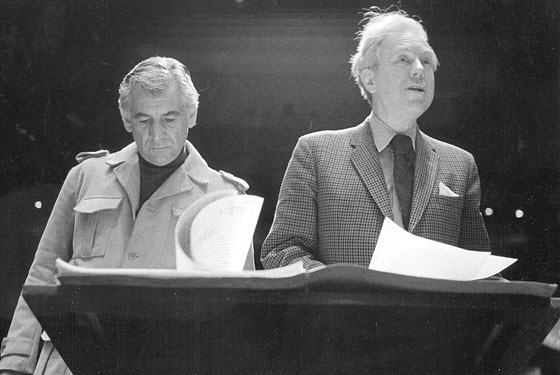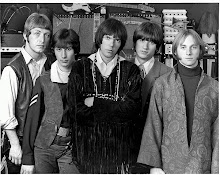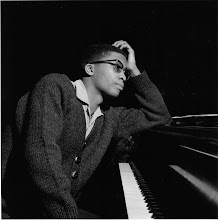One of my favorite pieces of classical music in my collection is the Elliott Carter String Quartets. It's these pieces, in my opinion, that set the standard of all classic string quartets. The only man let alone his quartets have garnered two Pulitzer Prizes in music. Each piece debuted in 1951 and 1959.
Since I don't know much how these pieces spark my emotion I will let someone who is better at this then I. I will refer you to the Wikipedia summery of String Quartets #1 and for #2 David Harvey.
The quartet embeds four movements in three sections, all contained between two solo cadenzas acting as bookends at each end of the quartet. The two cadenzas—the first for cello and the concluding for first violin—frame the piece conceptually. Within these bookends Carter composes four different sections, which he considers proper movements. However, the movements are not differentiated by pauses, instead bleeding into oneIn its treatment of vertical pitch space, the First String Quartet falls relatively early within Carter’s development of a harmonic procedure involving sets of pitch classes. Specifically, Carter claims that he was guided by an all-interval tetrachord in the development of this work. another for an integration that pauses would only distort.

Elsewhere he notes that this chord is “one of the two four-note groups that joins all the two-note intervals into pairs, thus allowing for the total range of interval qualities that still can be referred back to a basic chord-sound. This chord is not used at every moment in the work but occurs frequently enough, especially in important places, to function, I hope, as a formative factor."
In the Second Quartet, the maturity initiated by the Cello Sonata and First Quartet bears fruit. Work on the quartet interrupted the composition of the Double Concerto, to which it is closely related in technique. Both are the result of Carter's further refinement of musical language during the late 1950s, marked by a three-year break in his output. This is most apparent in the highly compressed time-world embodied by the quartet. There are still 'themes', but here (and henceforth) these are no more than fragments, momentary characteristic assertions of the intervallic, rhythmic and articulative vocabularies of the individual instruments. Here Carter is composing against the traditions of the genre - each instrument has a unique group of intervals and a typical mode of musical behaviour, the quartet being concerned with varying degrees of relationship between the four parts.

The first violin's music is virtuosic, assertive and fantastical by turns. The second violin plays in regular rhythms throughout, the character of its part described by Carter as "laconic, orderly...sometimes humorous". The viola's expressive lines tend towards the theatrically doleful, while the cello is given an impetuous nature, in music characterised by frequent acellerandi and decellerandi. Each instrument in turn 'leads' a movement, the others interpreting the gestures of the leader in terms of their own repertoire of intervals and articulations. Through the four movements there is a tendency for the parts to become more and more co-operative, the cello in the last movement drawing the other three instruments into a sweeping acceleration which leads to the quartet's climax (although even here, against a carefully notated accellerando, the second violin attempts one last assertion of its regular pulse). Against this move towards co-operation, the movements are separated by cadenzas (for viola, cello, and first violin) in which the instrumental characters become increasingly opposed: the viola's lamentations are answered with outbursts of "laughter or ridicule", the cello's expansiveness with insistence on regular pulse and constricting fixed-pitch schemes, and the fireworks of the first violin with silence. As in the First Quartet, the whole is 'framed', the brief Introduction and Conclusion presenting the characters of the instruments in polite companionship.

These pieces of music are a landmark in Classical music. Each of these pieces were handed to me when I was in college and recommended by a English professor who's knowledge about classical and 20th Century classical was far better then anybody I knew. When he handed me a tape copy of these String Quartets he told me to check out the album above and listen very carefully.
If I could recommend any classical besides Charles Ives I would include Elliott Carter in the same breath. They are both Americans and should be brought up in wit the same respect as Mahler, Bartok, Mozart, Ligeti, Beethoven and Bach. Seek these out if you don't own them. Enjoy a another world of wonderful classical music.


































































MosaicImages1.jpg)



























No comments:
Post a Comment